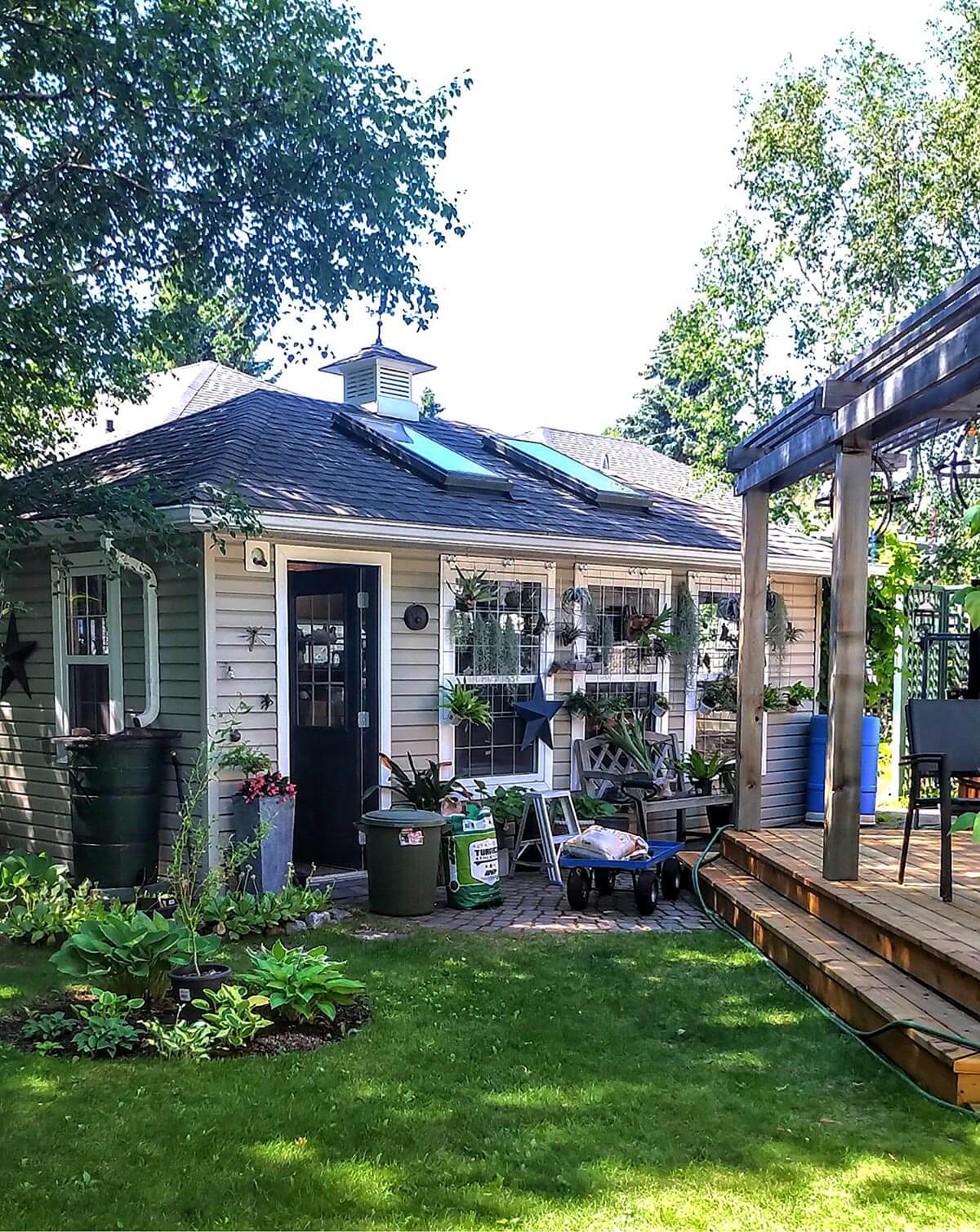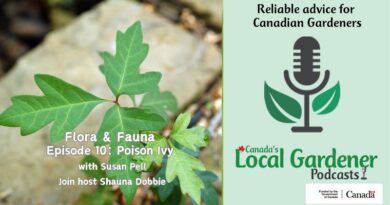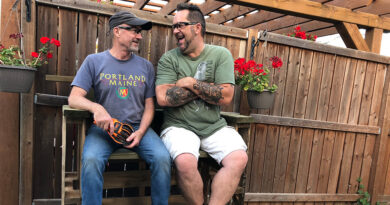Sayuri and Arthur Mah’s Red Deer Garden
Sayuri, known to her friends as Sai, and Arthur Mah have lived at their current Red Deer home since 1995 and have long ago completely adjusted to gardening in Alberta where conditions are much harsher than those of Sai’s native Japan.
It is not hard to pick Sai’s house out on the street. It is the one with the wilderness of flowers and other greenery. She has planted favourite trees; a pagoda dogwood on the left presides over a perennials bed, and on the right, a lovely linden shelters shade loving plants. In between, an oddly shaped rock stands on end in a bed of pebbles. Carefully chosen dwarf shrubs and some prairie driftwood stand at the base of the rock. This central border flows into a plantation under the linden tree
Plenty of flowers await in this charming Red Deer garden. An Itoh peony ‘Border Charm’ takes pride of place among the herbaceous peonies in the garden. She has planted Lamium ‘Beacon Silver’ and several varieties of hosta as well as spotted lungwort and other sun-shunners under the linden. She loves the shy and ephemeral lady slippers best.
This is all prelude to a trip to the wonders of the back yard. Behind a gate labelled “Secret Garden” lies a surprise. Instead of the usual display of perennials and other pretty plants, we discover a deck holding a world of succulents. They are everywhere, in small pots and large. Exotic varieties of their air-dependent cousins, Tillandsia, are hanging from the walls of a lovely potting shed.
And the biggest surprise of all? Sai is growing Lithops, a little-known succulent from South Africa that looks like a stone and is, indeed, known as the living stone. It grows quite low against the ground with is leaves inside the plant to discourage desert grazers. This fascinating plant has a little window on the surface to allow the sun to shine through and nourish the flowers that will emerge later in a burst of glory with daisy-like petals in fluorescent colours of yellow, orange, red, pink, and white. After a period of growth, the pebble-like plant splits and the flower emerges. The tricky thing about lithops is knowing when and when-not to water because in the wild they often get less than an inch of rain a year.
Sai is a serious grower of these plants. Her succulents are treated to a special soil mix, a very granular product called Turface Athletics, a calcined clay material used to condition sports fields. It seems well suited to the dry, aerated soil needs of all the succulents.
“I have approximately 360 or more succulents, including five or six varieties of lithops,” confesses Sai. She says she brings the succulents into the house on the main floor as well as into the basement for the winter. “My love of succulents came about when I noticed how resilient they are and how easy they are to propagate. I have about 40 varieties and my favourite is Echeveria,” she adds.
The other unusual plant was tillandsia, and Sai had the one known as Spanish moss (Tillandsia usneoides) an epiphytic (air growing) flowering plant, hanging from the potting shed wall. The difficult to grow (in this Alberta climate) staghorn fern (Platycerium) was also on display as were all sorts of other exotica.
Inside the potting shed, it is easy to see that this is a working garden – all the tools of her trade are in positions of abandoned action. There is much going on in Sai’s world.
Sai has a willing helper in her husband Art, who is clearly very proud of his inventive wife. He digs and builds and does the heavy lifting to accommodate her wishes. To help the plants and Sai, Art has added extra windows and two skylights to encourage light to come into to the potting shed so that it is almost a greenhouse. They actually also have a three-season greenhouse at the end of their Red Deer garden. Rainwater is collected in a big barrel for additional treats to the plants.
A border on the far fence of the back yard sports more of Sai’s shade lovers. The back yard is lined with trees. “I’ve planted around 20 trees,” said Sai. “Three Swedish aspens (backyard), two Evans cherry trees (one is gone), the linden in the front yard, the espalier apple tree, a number of cedars and junipers, Korean maple, Alberta spruce, Japanese silk lilac, birch . . . my favorite tree is the birch!” She has also planted two Scotch pines in the back yard. And the “espalier tree” is a ‘Goodland’ apple, which now lines up obediently along the fence. It will be interesting to see how it does in the harsh Alberta winter climate over the next few years.
“At this point in my life, I don’t think that I would change much to the gardens,” comments Sai contentedly. “Perhaps I would enhance the beauty with a few more hardscapes or sculpture or artwork.”
Her view of life and the garden is summed up as you leave this private haven. You are taken momentarily to Sai’s homeland with a Zen-like area has been established at the side of the house. A pebble path on a bed of fine gravel and bits of driftwood lead to a bamboo-lined fence. “The pebbles in my Zen garden represent life,” she said. “The wide part being birth and the narrower representing death.”
That truly is also the life of a garden.



